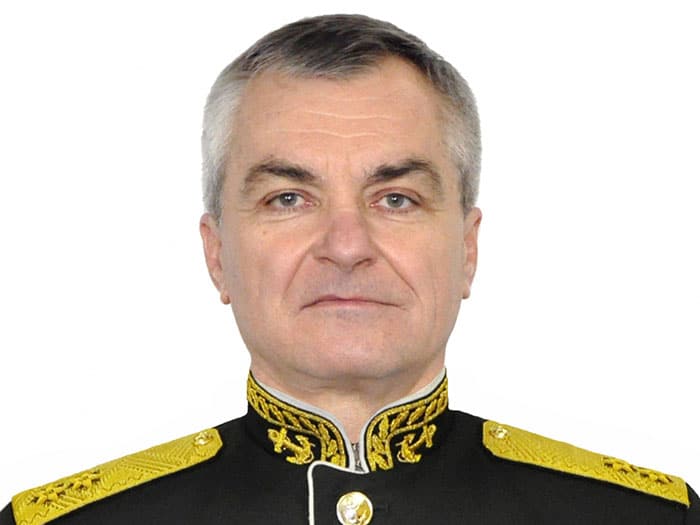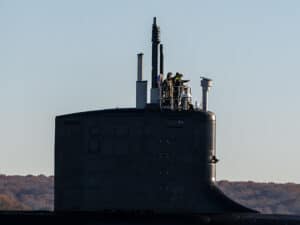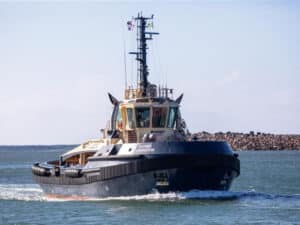
Russia’s Black Sea Fleet Commander reported killed
Written by Nick Blenkey
Viktor Sokolov IImage: Wikimedia Commons]
As a trickle of merchant ships starts to use the Ukrainian-designated “safe corridor” to its ports, the Ukrainian Navy and special forces continue to degrade Russia’s naval capabilities. The most recent example was a devastating missile strike on the headquarters of the Russian Black Sea Fleet on September 22. Initially, Ukrainian authorities said that “at least nine people had been killed and 16 wounded, including Russian generals, as a result of the attack.” Immediately posts on X, formerly known as Twitter, reported that those killed had included Black Sea Fleet Commander Admiral Viktor Sokolov.
One high ranking Ukrainian official said only that, “we will have to wait for the obituaries to find out.”
Today, however, news agency Interfax Ukraine reports Ukrainian Special Operations Forces as saying “after the defeat of the headquarters of the Black Sea Fleet of the Russian Federation, 34 officers were killed, among them the commander of the Black Sea Fleet of the Russian Federation. Another 105 occupiers were wounded. The headquarters building is not subject to restoration.”
The commander of the Black Sea Fleet was Sokolov. He received his promotion to admiral this June and, if his death is confirmed, would be the highest ranking Russian officer to be killed since the Russian invasion of Ukraine.
The former deputy commander of the Black Sea Fleet Commander, Captain 1st Rank Andriy Paliy, did not get his expected promotion to rear admiral. He died in March of last year, reportedly taken out by a sniper in Mariupol.
UKRAINIAN NAVY ANALYST COMMENTS
After the Ukrainian strike on the Black Sea Fleet HQ, the Russians will have problems with the control of their troops deployed in the Black Sea area, Ukrinform reports Dmytro Pletenchuk, the spokesman for the Ukrainian Navy, as saying on the air of national television
“You need to understand the mechanism. It’s clear that, conditionally, Putin doesn’t directly control the warships at sea as he has appropriate admirals who are perfectly aware of their forces, equipment, personnel, and how to properly control them. At this moment, they lose the man who manages this whole process – and with him, his staff that also manages the fleet. It must be understood that this is a very large group. Imagine that part of this mechanism simply becomes inoperable. Therefore, as of now, they will really have corresponding problems with controlling their troops,” said Pletenchuk.
He noted that the reports are yet to be verified whether the entire command was present at the HQ at the moment of the strike or not, but usually, it’s all top leaders who gather for meetings there. According to Pletenchuk, the group included at least the chief of staff and one of the deputies.
Pletenchuk noted that the Russians had very limited maneuverability in the Black Sea even before that.
“They mostly use carriers of long-range weapons, guided missiles. Accordingly, fewer than 10 units are involved,” Piertenchuk said.
“Now someone will be transferred to the Black Sea Fleet to manage everything, but before these people enter the system and understand the situation, it will take them some time so they will lose efficiency.”
ANOTHER IN A STRING OF RUSSIAN SETBACKS
The attack on the headquarters building came within a week of it emerging that damage inflicted on two of its warships sustained in a September 13 Ukrainian attack is far more extensive than Russia initially admitted. Images emerging on social media showed that the damage inflicted on the Kilo 636.6 class submarine Rostov-na-Donu has likely put it out of action for years. The submarine, along with the landing craft Minsk, was hit in an attack while under maintenance in the Russian naval base in occupied Sevastopol.
Even before those images emerged, the U.K. Ministry of Defence had assessed that the Minsk had “almost certainly been functionally destroyed and that the Rostock had “likely suffered catastrophic damage.” The MoD also assessed that there was “a realistic possibility” that the complex task of removing the wreckage” would put the Sevastopol dry docks out of use “for many months.”
UPDATE: This is a developing story with new video of Sokolov apparently alive and well emerging. More to follow




